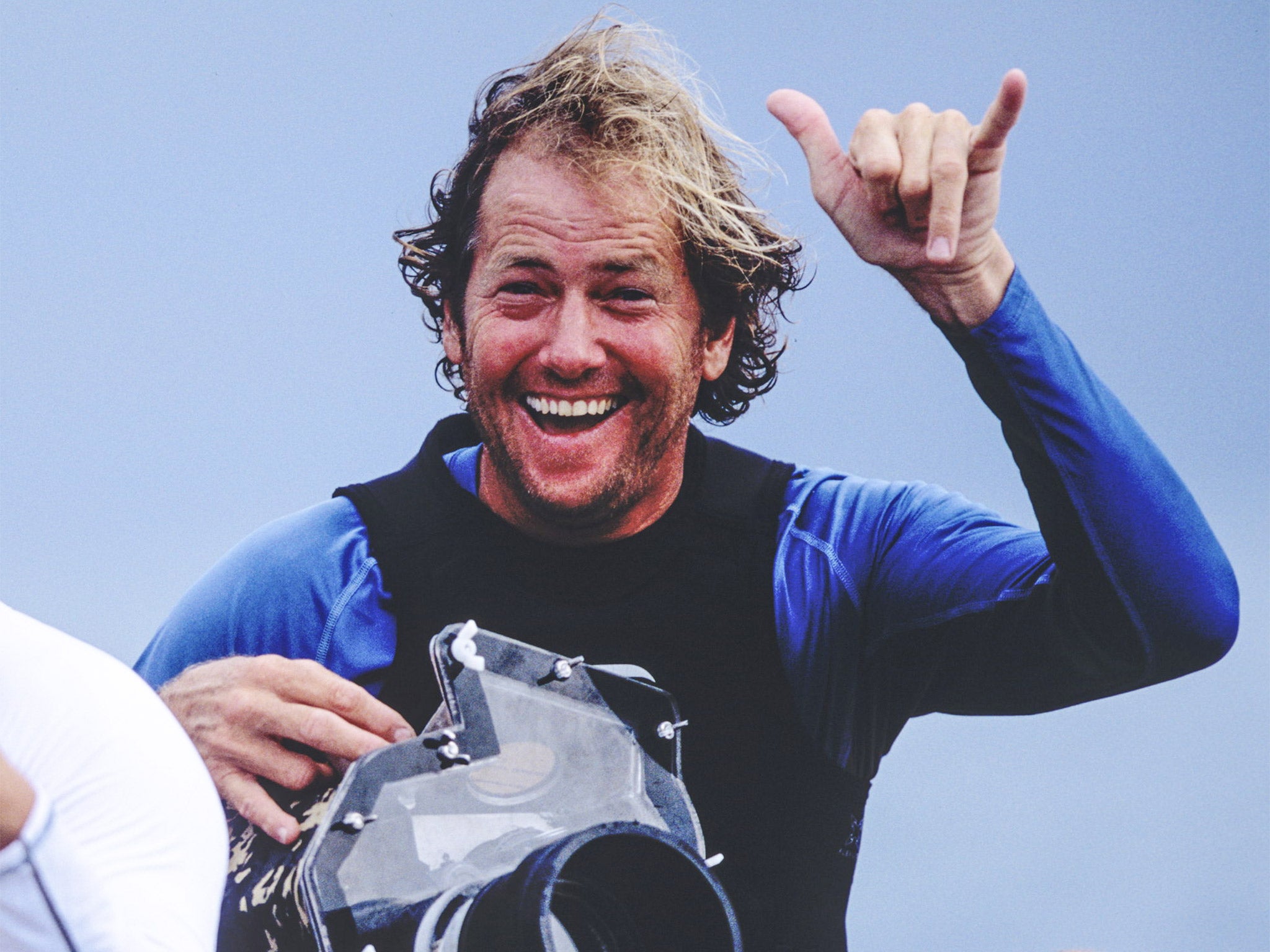Sonny Miller: Photographer and film-maker whose work helped make surfing and snowboarding sports with a global following

Sonny Miller was one of the most renowned cinematographers in the history of surfing, whether shooting from the beach, a jet ski, a helicopter or from among the waves themselves. Before turning to film he had been a still photographer whose close-up action photos were influential in the growth and popularity of snowboarding and skateboarding first, in the US and later around the world.
He was reportedly the first still photographer to use a waterproof flash to shoot big wave surfers, earning him, in the 1980s, cover photos in Surfer magazine, often described as the "bible" of the sport. Turning to the mountains, his dramatic image of snowboarder Damian Sanders became the cover of the first issue of Snowboarder magazine in 1986, helping launch the new sport to a wider public.
Miller's expertise also won him mainstream work, including in Hollywood and on the 2002 James Bond film Die Another Day, for which, harnessed, he hung out of a helicopter to film Bond (in reality the professional big wave surfer Laird Hamilton doubling for Pierce Brosnan) surfing in the dark towards a beach in what we were led to believe was North Korea.
In fact, since North Korea does not as a rule have such giant waves and the producers would hardly have been granted permission to film there, Miller and his team shot the scene at Peahi, nicknamed "Jaws Beach" on Maui, Hawaii. The shots of Bond and his two companions coming ashore with their boards were later filmed at Holywell Bay near Newquay in Cornwall.
Hamilton, who surfed as Bond in that opening scene, told The Independent, "In our world of surfing and water photography, Sonny was the premier. When we shot that famous scene at Christmas 2001, it took us the best part of two days and four solid hours of surfing. Sonny, [photographer and film-maker] Don King and the team were variously in the water with us, in boats with panoramic giro-cameras and in choppers, all for that scene of a few seconds to follow Madonna's theme song. Several wipe-out scenes never got used in the film. Obviously, surfing Jaws beach in the dark would be madness so Sonny and the team shot it during the day and used DFN [day-for-night] treatment on the film."
Hamilton and two other renowned surfers, Dave Kalama and Darrick Doerner, surfed those big waves looking menacing and carrying rubber rifles. The scene worked and the Bond producers were delighted.
Miller's death from a heart attack 10 days short of his 54th birthday caused shock waves, tweets and blogs throughout the world of extreme sportsmen and women, a world he had lit up for so long with his talent, enthusiasm, hacksaw chuckle and undimmable smile. "Keep smiling" was his motto, Cap'n Fun was his nickname and his favourite cry when arriving to shoot surfers (usually in 16mm – he avoided video) was "It's Miller time!" (a reference to the famous American beer ads).
Among the other films for which he shot big wave surfing scenes were The Big Bounce (2004), starring Morgan Freeman and Owen Wilson in an adaptation of the Elmore Leonard book, Riding Giants (2004), an action-packed documentary chronicling the ancient and modern history of surfing, and In God's Hands (1998), a cult film about surfers who travel the globe in search of the biggest wave.
Turning from surfboard to skateboards, Miller helped shoot Lords of Dogtown (2005), featuring the late Heath Ledger, a fictionalised take on the real-life Z-Boys, young men who rode the California streets of Santa Monica and Venice on their boards in the 1970s, practising in empty swimming pools while the owners were away.
In the mid-1990s Miller burst on to the surf scene with a series of documentaries which had a massive influence on the sport and turned him into almost as much of a legend as the best-known big wave surfers he captured. The films, made for the Australian company Rip Curl, a major manufacturer of surf and snowboard products, included The Search, Tripping the Planet and Searching for Tom Curren (an American big wave surfer), which was named Video of the Year by Surfer magazine in 1997.
Harold Miller was born in 1960 in San Jose, California, but won the nickname Sonny early on because of his disposition. He began surfing at the age of 11 on the Pacific waves off San Diego and Orange counties, notably at the beach community of Cardiff-by-the-Sea in Encinitas, California, where he also became a familiar figure skateboarding the streets until dark and won a reputation as a "hardcore charger."
"He was a much-loved guy wherever he went," said Laird Hamilton. "A bright light, positive, gung-ho, never complaining." Thousands of tweets and blogs said much the same, many of them from Jeffreys Bay, South Africa, where the J-Bay Open, a major world championship surfing event, was going on when he died. "Sonny truly epitomised the meaning of being stoked," said leading surfer Kelly Slater. Another friend, Bobby Williams, blogged: "trying to color-correct film on shrooms [magic mushrooms], running from the cops in India with no film permit ... a pirate who lived in beautiful chaos."
Sonny Miller's mother Suzanne, whom he cared for after she began suffering from Alzheimer's seven years ago, died only six days before him. He was unmarried and is survived by his father.
PHIL DAVISON
Harold Miller, film-maker: born San Jose, California 18 July 1960: died San Diego, California 8 July 2014.
Subscribe to Independent Premium to bookmark this article
Want to bookmark your favourite articles and stories to read or reference later? Start your Independent Premium subscription today.

Join our commenting forum
Join thought-provoking conversations, follow other Independent readers and see their replies